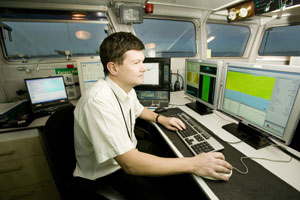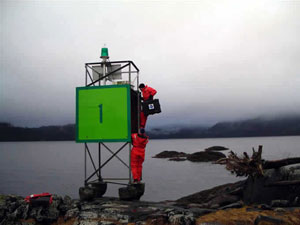Hydrographic Surveyor
Tasks & duties

Hydrographic surveyors may do some or all of the following:
-
survey and monitor the seabed, riverbeds or riverbanks
-
survey and monitor intertidal and foreshore areas
-
operate specialist echo-sounding equipment
-
record and analyse survey data
-
report on survey data to clients
-
develop maps and charts for maritime and commercial fishing use
-
provide sea and waterway resource management advice
-
make environmental impact assessments for marine areas
Skills & knowledge

Hydrographic surveyors need to have:
-
knowledge of survey methods
-
skill using surveying equipment
-
computer skills
-
knowledge of environmental issues
-
understanding of relevant legislation such as the Resource Management Act
-
good writing and communication skills
-
good analytical and problem-solving skills
-
planning and organisational skills
-
seamanship and navigation skills
Entry requirements
To become a hydrographic surveyor you need to have a Bachelor of Surveying and a Postgraduate Diploma in Science, specialising in hydrography, which together take four years to complete. The University of Otago School of Surveying is the only provider of these courses in New Zealand.
Many people enter the course after having worked as land surveyors or hydrographic technicians. Study done for these jobs can cut down the amount of time it takes them to qualify.
The Royal NZ Navy also trains a small number of hydrographic surveyors.
Secondary education
A tertiary entrance qualification is needed to enter university, and an A or B Bursary or NCEA equivalent is preferred. Useful subjects include English, maths with calculus and statistics, geography, computer studies, physics, economics and graphics.
Registration
Registration is voluntary for hydrographic surveyors.
To become registered you need to have completed the programme requirements in hydrography at the University of Otago. After two years' work experience (at least half of which is fieldwork), you can apply to the New Zealand Institute of Surveyors (NZIS) to become a Level 1 Hydrographic Surveyor. You are then assessed on behalf of the NZIS by the Australasian Hydrographic Surveyors Certification Panel (AHSCP).
Level 1 certification is not required to work as a hydrographic surveyor in New Zealand. However, it is an internationally recognised standard of competency, and makes it easier to get work overseas.
Related courses
Surveying
For more information, please refer to Career Services.
Document Actions
